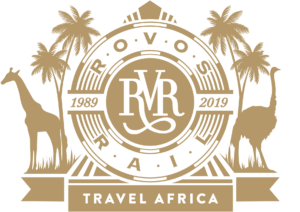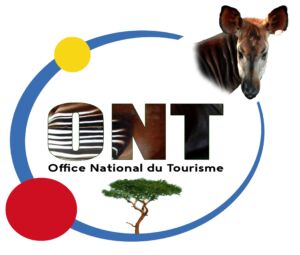For this travel in Congo we will visit the remains of the Mobutu Regime. Our travel will start in the capital: Kinshasa where you will explore the city and see legendary places such as the stadium where Mohammed Ali was fighting during the rumble in the jungle. Afterwards we will drive north of Kinshasa, visit the old Chinese palace of Mobutu and two gigantic satellites in which he wanted to be able to broadcast to all of the nation. We will stay for two nights in the beautiful reserve of Bombo Lumene, before heading back to Kinshasa. From Kinshasa we’ll take the plane to Gemena. From Gemena it is one day traveling to Gbadolite. We will stay one full day in Gbadolite, before going back to Gemena. As there are not a lot of flights between Gemena and Kinshasa, we cannot give an exact amount of days to stay in Gemena, it is also possible to return through Bangui in Central African Republic.
Mobutu Sese Seko Kuku Ngbendu wa Zabanga (born Joseph-Désiré Mobutu on October 14, 1930 in Lisala, Belgian Congo; died September 7, 1997 in Rabat, Morocco) was the dictatorial President of the Democratic Republic of the Congo from 1965 to 1997 (Zaire from 1971 to 1997). His name means "the warrior who strides from conquest to conquest without fear".
In September 1960 Mobutu came to power in a coup in which he ousted Patrice Lumumba and Joseph Kasavubu. After Kasavubu's reinstatement, he retained supreme command of the army. On November 24, 1965, he staged a second coup; this was very well prepared and so well executed that Mobutu was able to take power without bloodshed. Mobutu overthrew Kasavubu, seized the office of President and banned all political activities. This coup in the context of the Congo turmoil and the Cold War only succeeded with substantial help from Western secret services and misled the public about the bloodthirstiness and brutality of his rule.
The fact that the coup d'état came about without bloodshed was even credited to Mobutu in the West. The hymns of praise indicate that the "savior of Congo from the looming communism" acted with Western connivance, if not at Western cue. This was also indicated by the duration of his dictatorship, which kept Western criticism and disruptive maneuvers at bay for more than thirty years. During the Mobutu dictatorship, a kleptocratic clique was allowed to plunder the country, in return he guaranteed uncompromising loyalty to the western world, its defense system and its anti-communism. In addition, the West could assume that Mobutu also guaranteed its second main interest, continuous access to Congolese raw materials, especially copper.
In 1971, during his reign, which was marked by a cult surrounding his person, he had Congo renamed Zaire, which kept this name until the end of the Mobutu government in 1997. Mobutu wore his own uniform, based on clothing worn by Jawaharlal Nehru and Mao Zedong, with frivolous African influences. The high-necked leopard-print jacket with silk foulard, the abacost, became mandatory for government officials in lieu of a Western suit. Women were also encouraged to dress in 'African' rather than Western clothing.
Changing all names to African names was part of the Africanization policy. He gave the go-ahead for this on January 2, 1972: from then on currency, river and land were called Zaire. Mobutu took the lead by changing his name from 'Joseph-Désiré Mobutu' to 'Mobutu Sese Seko kuku Ngbendu wa za Banga' (= the strong, powerful leader who will bring the country to prosperity). In 1994, Mobutu was suffering from prostate cancer and had to be treated in Switzerland. After his return to Zaire, he was physically very weak. During his absence, the Congolese Civil War began in eastern Zaire. The rebels, led by Laurent-Désiré Kabila, seized power in May 1997. Mobutu fled, leaving Congo poor and in chaos. He died in Rabat in Morocco from the effects of his cancer.
Note that flights to Gemena are not frequent, so we’ll have to plan well ahead of time. You’ll need at least three buffer days in Kinshasa afterwards in case the plane from Gemena to Kinshasa is delayed. We are not responsible for you missing your international flight due to delays.
Itinerary:
Day 1: Arrival in Kinshasa
You’ll be brought from the airport to your hotel by our team.
Day 2: City Tour in Kinshasa
Full day city tour in which we’ll visit the Congo rapids, the colorful textile market, Académie de Beaux-Arts, St Anne Cathedral and more. Local lunch at noon.
Day 3: Mobutu’s Chinese palace and Bombo Lumene
Early departure to Mobutu’s old Chinese palace north of Kinshasa and visit to the old satellites of Mobutu’s regime before going to Bombo Lumene. Campfire and BBQ tonight at Bombo Lumene.
Day 4: Bombo Lumene
Explore the beautiful park and Bombo Lumene and go for a swim in the rapids of the river if you dare! Another beautiful evening near the campfire followed by a peaceful sleep far away from the noise of Kinshasa.
Day 5: Back to Kinshasa
Today we’ll drive back to Kinshasa, we’ll be back somewhere in the afternoon.
Day 6: Flight to Gemena
Flight to Gemena today.
Day 7: Exploration of Gemena
Today is dedicated to visit the town of Gemena
Day 8: From Gemena to Lisala
Full day drive from Gemena to Lisala today. If the road is in really bad shape we’ll have to switch the car to ride on the back of a motorbike for several hours.
Day 9: Lisala
Full exploration of Lisala and one of the old palaces of Mobutu. As President, Mobutu has not forgotten his birthplace. In this city where he was born and raised, Mobutu began to build a palace in the 90s. The whole is made up of a complex of three marble buildings. The goal is to make it a private mansion where the president should reside during his visits to his hometown. Built more than ten meters from the river, the first floor gives a splendid view of the waters of the Congo. On the pediment of the main entrance is a plaque on which are marked the initials of the presidential couple: M B: Mobutu Bobi. This palace that has swallowed millions is abandoned and in ruins. Completely looted in 199, it is now transformed into a makeshift school. The salon d'honneur, the bedrooms and several other rooms have become classrooms.
Day 10: The road to Gbadolite
If the road is bad, we’ll have to do this part on the back of a motorbike, which will be long and tiring.
Day 11: Gbadolite
About ten kilometers from Gbadolite, Mobutu had two other luxurious residences built, but smaller than the Palais des Bambous. They are, in a way, his mansions. The Eagle's Nest is built on a hill. This impressive building is all in marble. It has several swimming pools and a helicopter landing strip. The Chinese palace is made up of pagodas, fountains and gardens. It was built by workers who came straight from the country of Mao on the model of the Nsele palace. Its operation cost Zairian taxpayers $150 million annually. These two residences, which earned the Marshal the nickname Kawele Eagle, did not resist the looting that followed the end of his regime.
Gbadolite used to be a small village in the equatorial forest. Gradually, it transformed into a city with modern buildings and an international airport. Mobutu built a lot of residences over an area of 15,000 m². The main and most important of this complex made up of several buildings is an elephantine building, the Bamboo Palace also nicknamed the Versailles of the jungle. This real castle in the heart of the equatorial forest is the work of the Franco-Tunisian architect Olivier-Clément Cacoub. It is there that the marshal gives pompous receptions and receives his distinguished guests. In addition to the two bronze leopards guarding the entrance, there is also the bust of Mama Yemo and the family vault, not to mention the Marie-la-Miséricorde chapel with its imposing metal cross and its twelve bells. Today, this little Mobutist paradise is eaten away by time and nature. The city has experienced repeated looting.
Day 12: Back to Gemena
Back to Gemena today, night at the hotel.
Day 13: Flight to Kinshasa
Flight to Kinshasa and drop off at the hotel. End of tour.
Price doesn’t include:
- Meals and drinks
- Tips and gratuities
- International flights
- Visa
"Any other comments/suggestions:"
"Included the VIP room (Lake Kivu) in the Program"
- Jean-Denis, Canada, Virunga Gorilla Park and Handicrafts Market, Dagambwa Island and Coffee Plantation in Minova















































